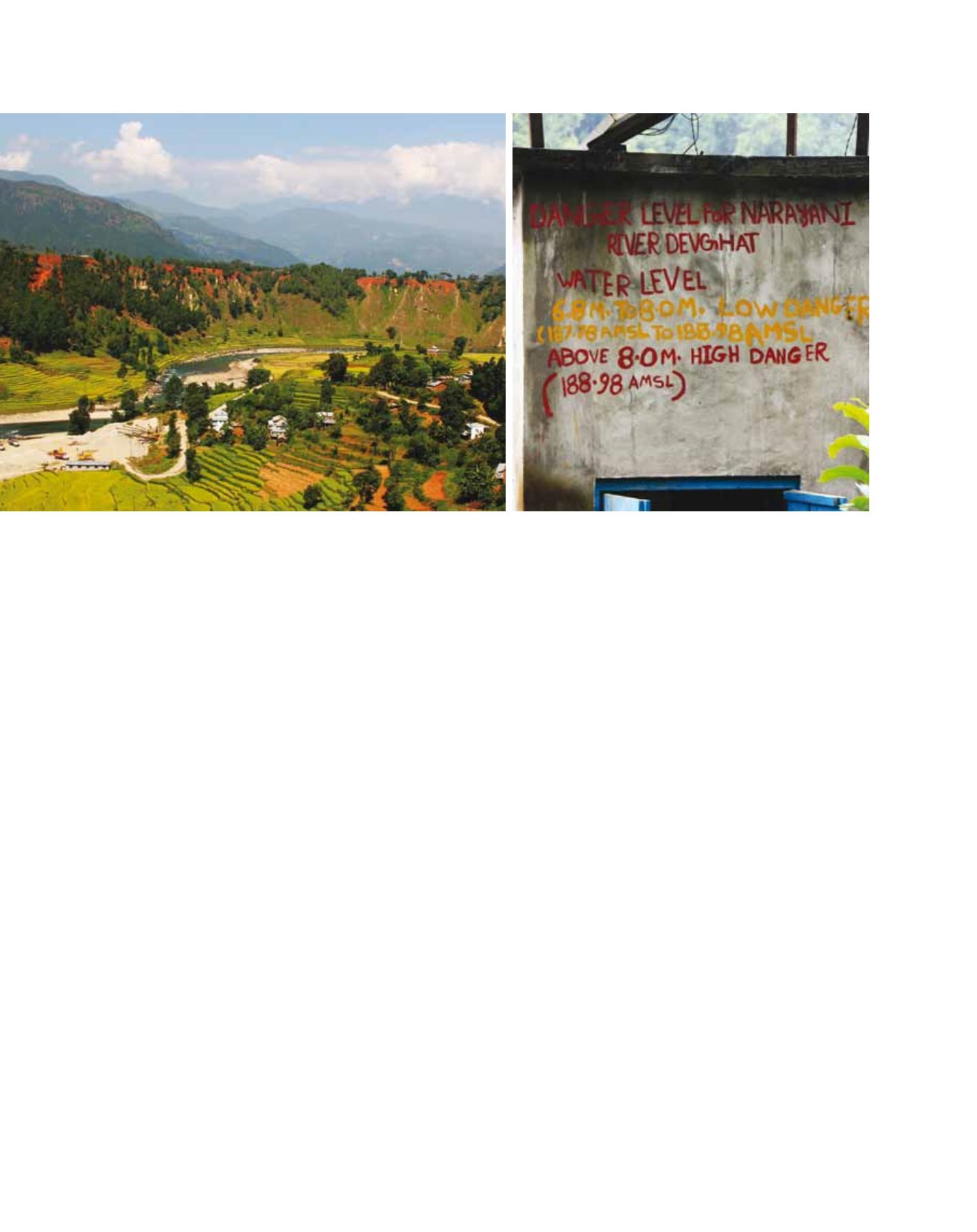

[
] 256
C
apacity
D
evelopment
Ministry of Agriculture Development (MoAD), focusing on the
development of an Agricultural Management Information System
(AMIS), which will use both historical and current weather and
climate data from the DHM. Each modernization effort has three
critical components:
• Institutional strengthening
• Updating the observing networks and forecast production
infrastructure
• Developing effective service delivery that meets users’ expectations.
Experience has shown that all three must be tackled if a moderniza-
tion programme is to succeed.
Depending on the capacity of the NMS, expert assistance may be
needed for the entire five years of project implementation. In Nepal,
training and other capacity improvement efforts will increase the
abilities of DHM staff, and implementation support will be provided
by contracting a ‘systems integrator’ (an expert consortium familiar
with NMSs, observing networks, forecasting and service delivery), to
help define the overall requirements for the procurement of equip-
ment and the design of the overall system.
While the systems integrator can provide the internal support
needed to build the system, it is essential that the NMS is
connected to the global meteorological community through
the World Meteorological Organization (WMO) and, in partic-
ular, can take advantage of opportunities to pair with more
advanced NMSs, such as the neighbouring Indian Meteorological
Department and China Meteorological Administration in the case
of Nepal. Such twinning or pairing arrangements should include
forecasting and warning support and weather, climate and water
services delivery. Twinning would provide operational support
so that the NMS could rely on its partners to help it interpret
hazardous situations. It would also provide donors
and investors with a viable risk reduction strategy.
Government investment would show an immediate
return while national expertise is built, by lever-
aging the expertise of partners. Since expertise is
likely to be needed from several different NMSs,
the favoured approach is to use WMO Regional
Specialized Meteorological Centres and Regional
Climate Centres.
The agricultural component of the programme
will build an AMIS to provide weather and climate
information for agriculture. This kind of dedicated
user-oriented service, built with the ministry respon-
sible for agriculture, demonstrates how services in
general could be developed. Lessons learned from this
effort will be generally applicable to other weather- and
climate-sensitive sectors, enabling comparable sector-
specific services to be developed.
Ensuring positive results
The World Bank requires a strong results framework
for all its projects. The PPCR will be evaluated through
several factors including the measurement of weather and
climate product improvements. Continuous assessment
of the delivery of services to the public will consider the
programme’s impact on various groups of stakeholders,
including gender and minority groups. Targeted sector-
specific weather- and climate-sensitive groups will be
solicited through an independent evaluation process.
In both Nepal and Yemen, there is extensive need for
skills building and for climate and warning informa-
Left: typical image of Nepal, showing a river, terraces and erosion. In heavy rains landslides are common, in addition to river flooding. Right: shows flood levels on the
side of a hydrological gauging station. These stations are permanently manned by an observer who takes care of the measurements and issues local alerts based on
the river level and the instructions on the side of the building
Images: David Rogers
















